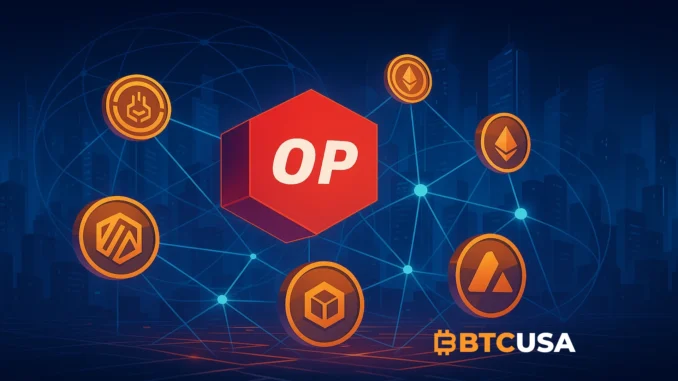
Optimism announces a major strategic reset
The co-founder of Optimism has officially declared the beginning of a new era for the project, marking a sharp shift in priorities after years of fragmented expansion. According to the statement, the team had previously spread itself too thin, hiring without a clear strategy and focusing on too many non-essential initiatives while core execution suffered.
This lack of focus, combined with challenging market conditions, contributed to underperformance, including sustained weakness in the OP token price. With the market changing and expectations evolving, Optimism is now consolidating its efforts around what it believes truly matters: scalable infrastructure and real demand from institutions.
From fragmentation to single-direction execution
In the past, Optimism contributed to the launch of major ecosystems and chains such as Base, Ink, Unichain, Worldchain, and Soneium. While these initiatives demonstrated technological capability, they did not translate into a cohesive and repeatable growth engine for the network.
The team now acknowledges that managing multiple independent efforts diluted accountability and slowed decision-making. In response, Optimism has restructured its internal organization. Leadership, engineering, and corporate sales efforts have been aligned under a unified execution model to regain speed, clarity, and strategic consistency.
A renewed focus on institutional adoption
The new primary objective is to attract large companies and bring real-world assets and operations on-chain. Rather than competing for short-term hype or retail narratives, Optimism is aligning its roadmap with the long-term needs of institutions.
These enterprises require:
- Massive scalability
- High reliability and uptime
- Clear economics and governance
- Infrastructure that can support real financial systems
The co-founder emphasized that competition for enterprise clients is growing rapidly. Solana, Arbitrum, Avalanche, and other platforms are actively pursuing corporate adoption. However, Optimism believes OP Stack offers a more mature and proven framework for large-scale, high-performance deployments.
Why OP Stack stands out
OP Stack is positioned as more than just another Layer 2 framework. It is built to enable independent yet interoperable networks that share a common technological standard while maintaining autonomy.
This model serves a specific need in the enterprise world: control without isolation. Companies want to own and operate their own infrastructure without being tied to a single centralized chain or provider.
Optimism’s close collaboration with Base provided real-world experience in scaling a high-demand network. Through both successes and failures, the team gained insight into what works in production environments — and what does not.
That hard-earned knowledge is now being used to refine OP Stack into a platform suited for large organizations with complex requirements.
OP token and market implications
The admission that OP’s price is currently at historically low levels underscores the seriousness of the reset. Instead of masking challenges, Optimism is choosing transparency and structural change.
For the market, this could represent either a final capitulation or the early foundation of a long-term recovery phase, depending on execution and institutional traction. Historically, major transformations often occur when projects are forced to confront hard truths and rebuild from the ground up.
A successful transition toward enterprise-scale adoption could significantly improve long-term network usage, transaction volume, and token demand.
Final outlook
Optimism’s new direction signals a shift away from chasing fragmented narratives and toward building a sustainable, institutional-grade blockchain ecosystem.
The focus is now clear:
- Build the most scalable financial infrastructure
- Bring companies and assets on-chain
- Enable true ownership and control for enterprises
Whether this transformation will turn Optimism into a dominant institutional Layer 2 remains to be seen, but one thing is certain: the era of “spray and pray” expansion is over. Execution and real-world adoption are now the only metrics that matter.


